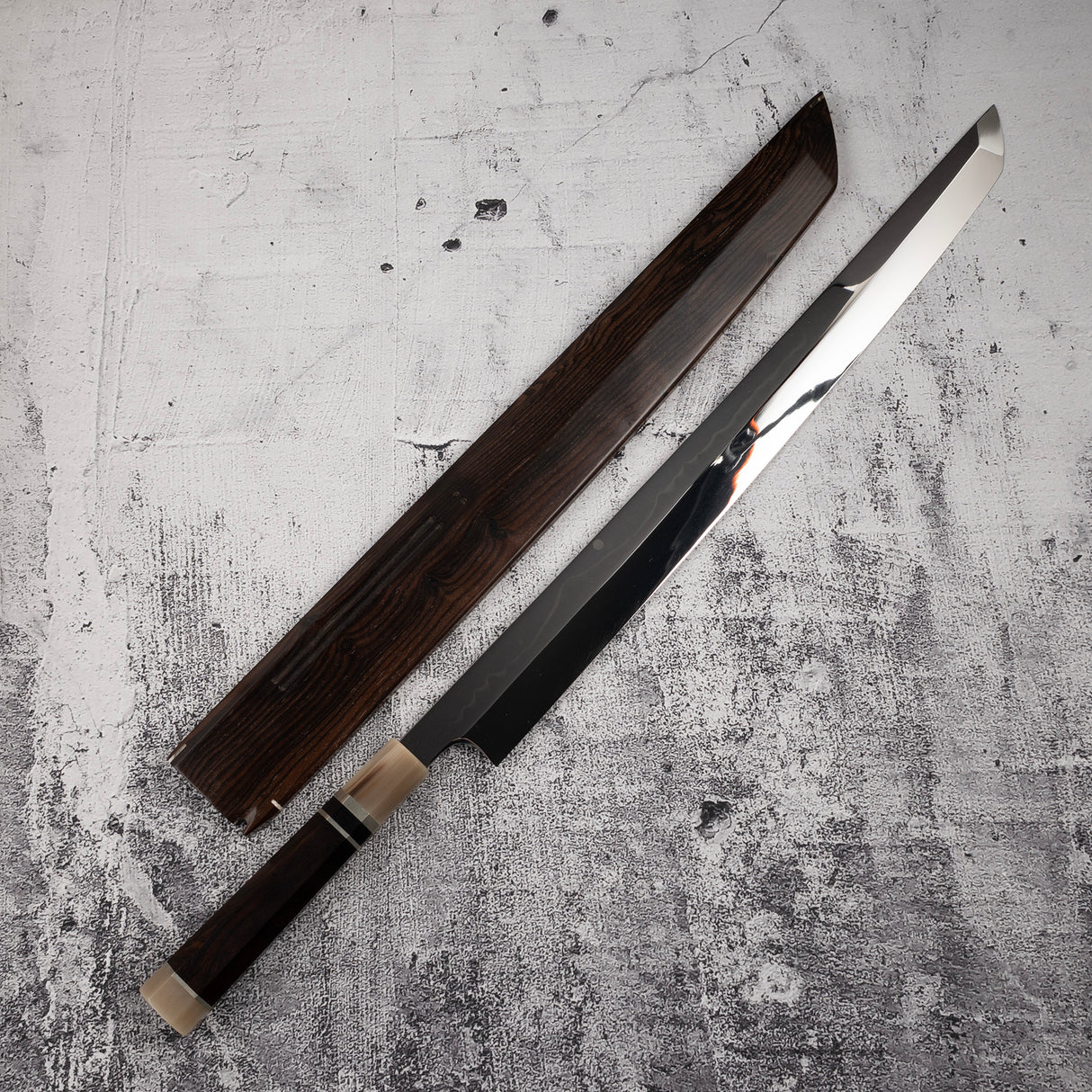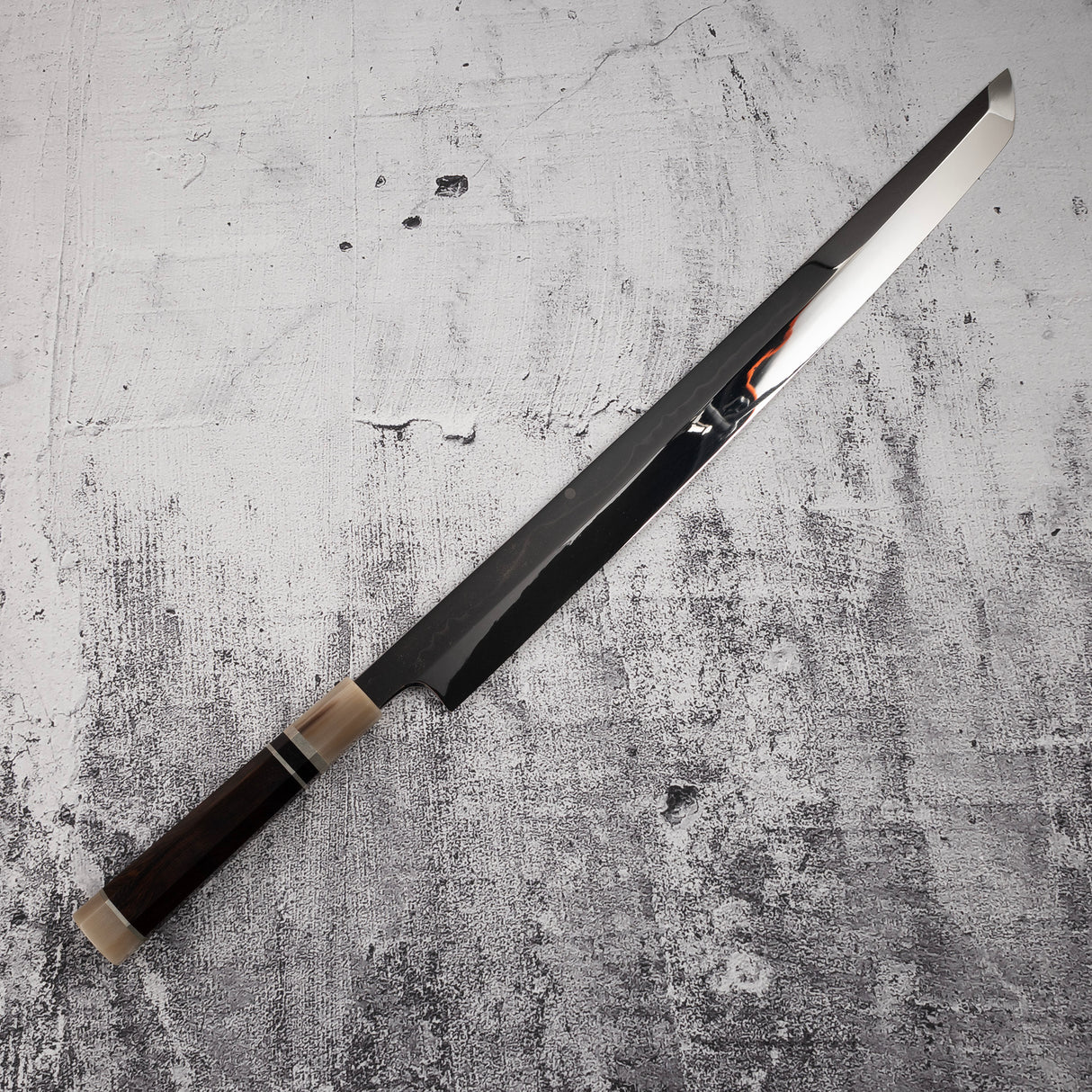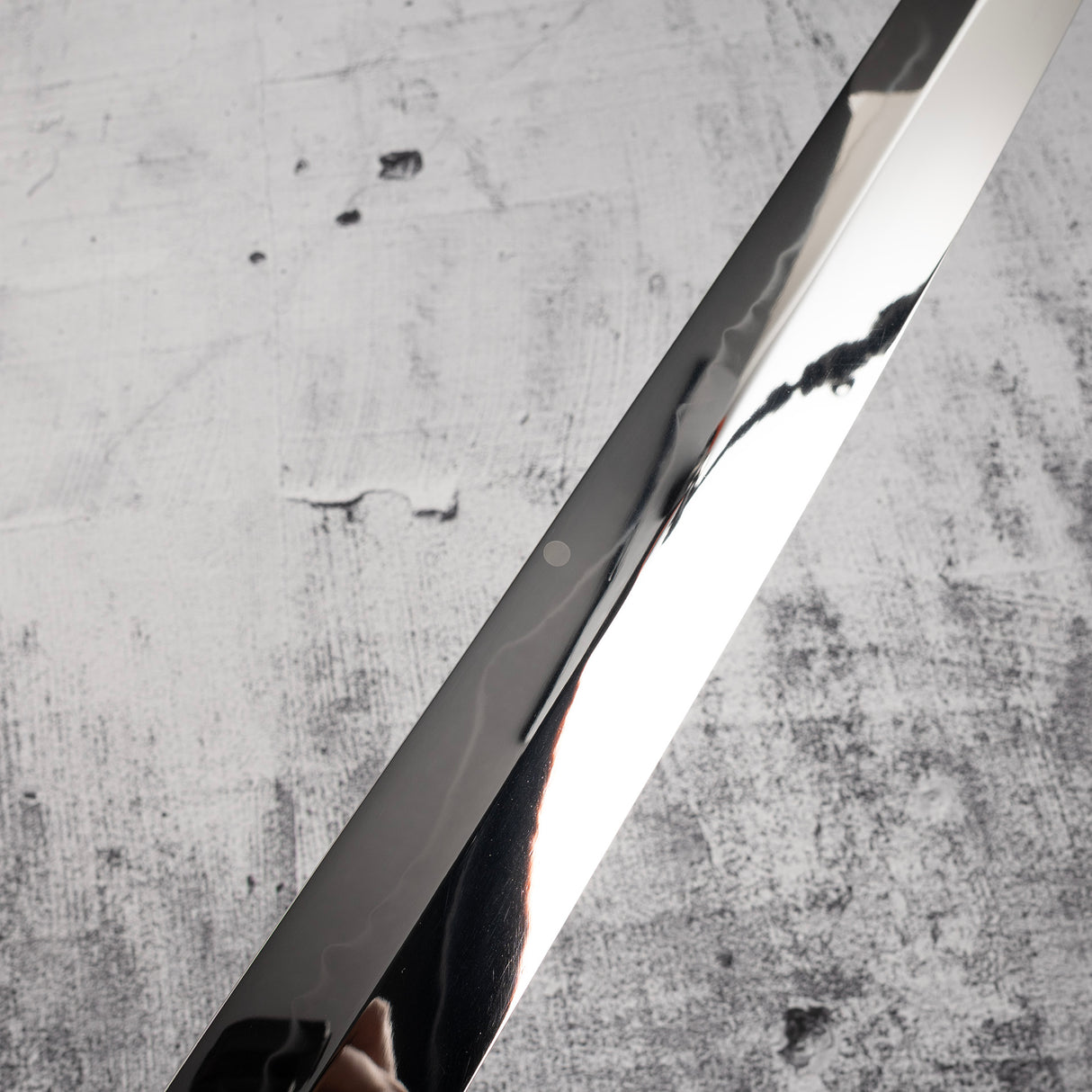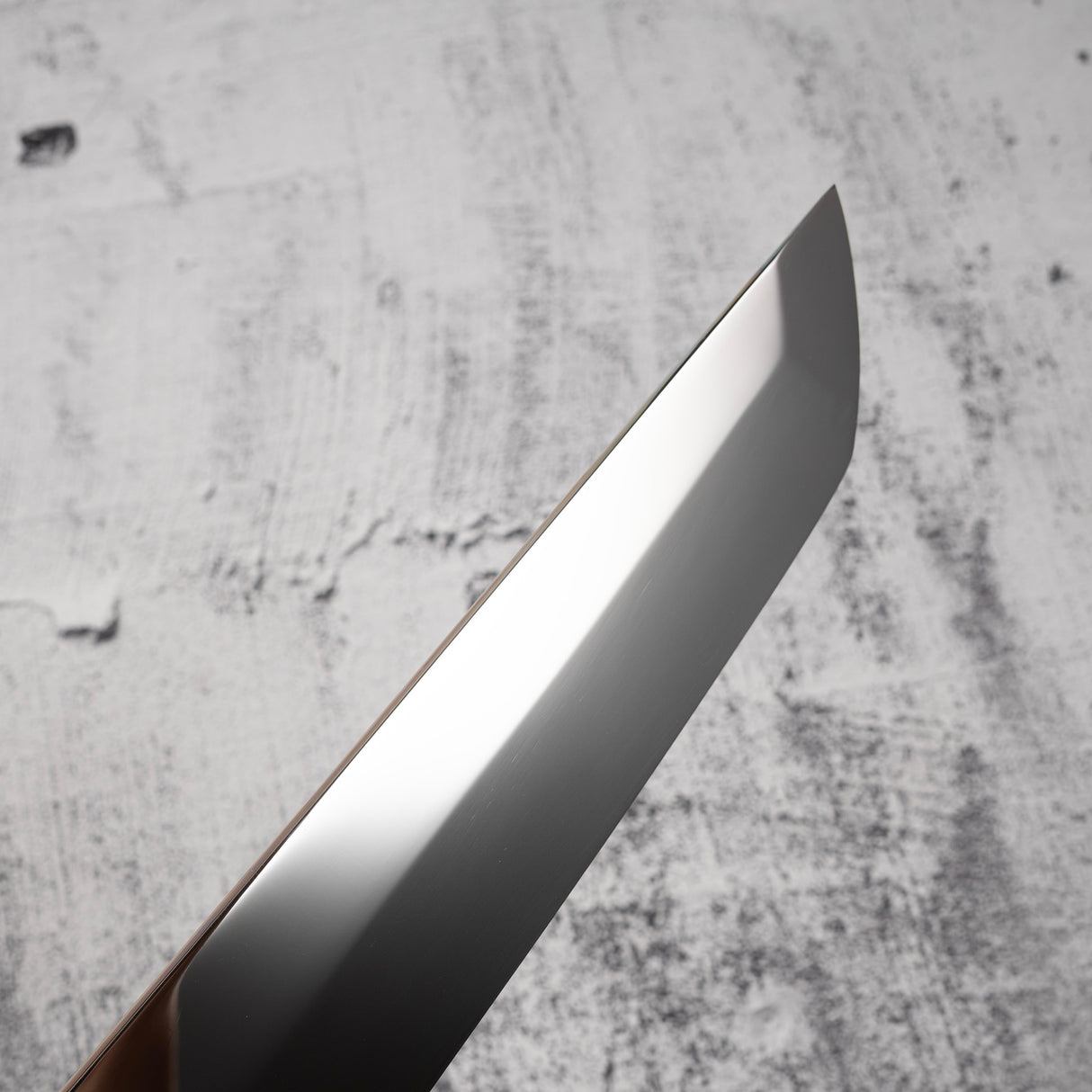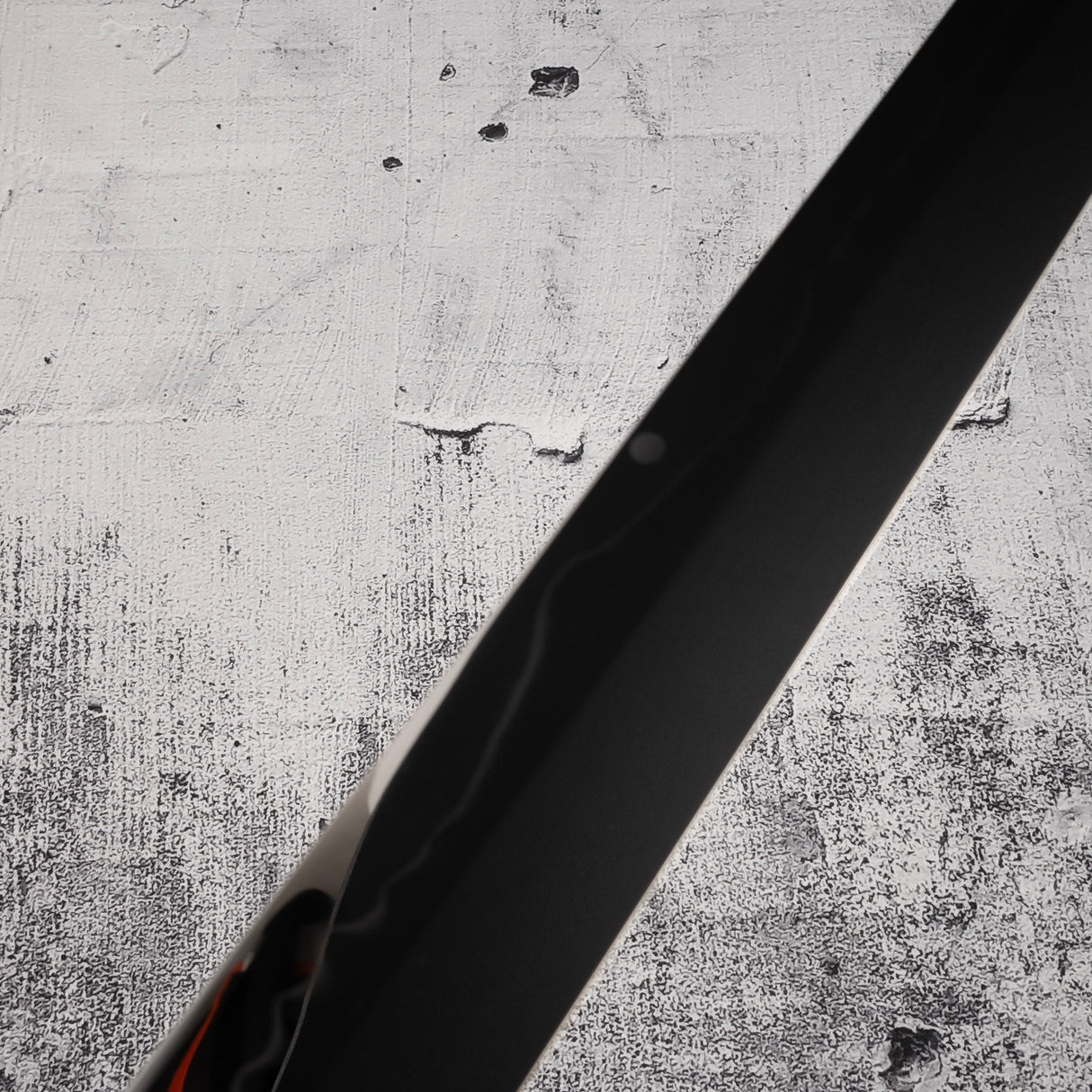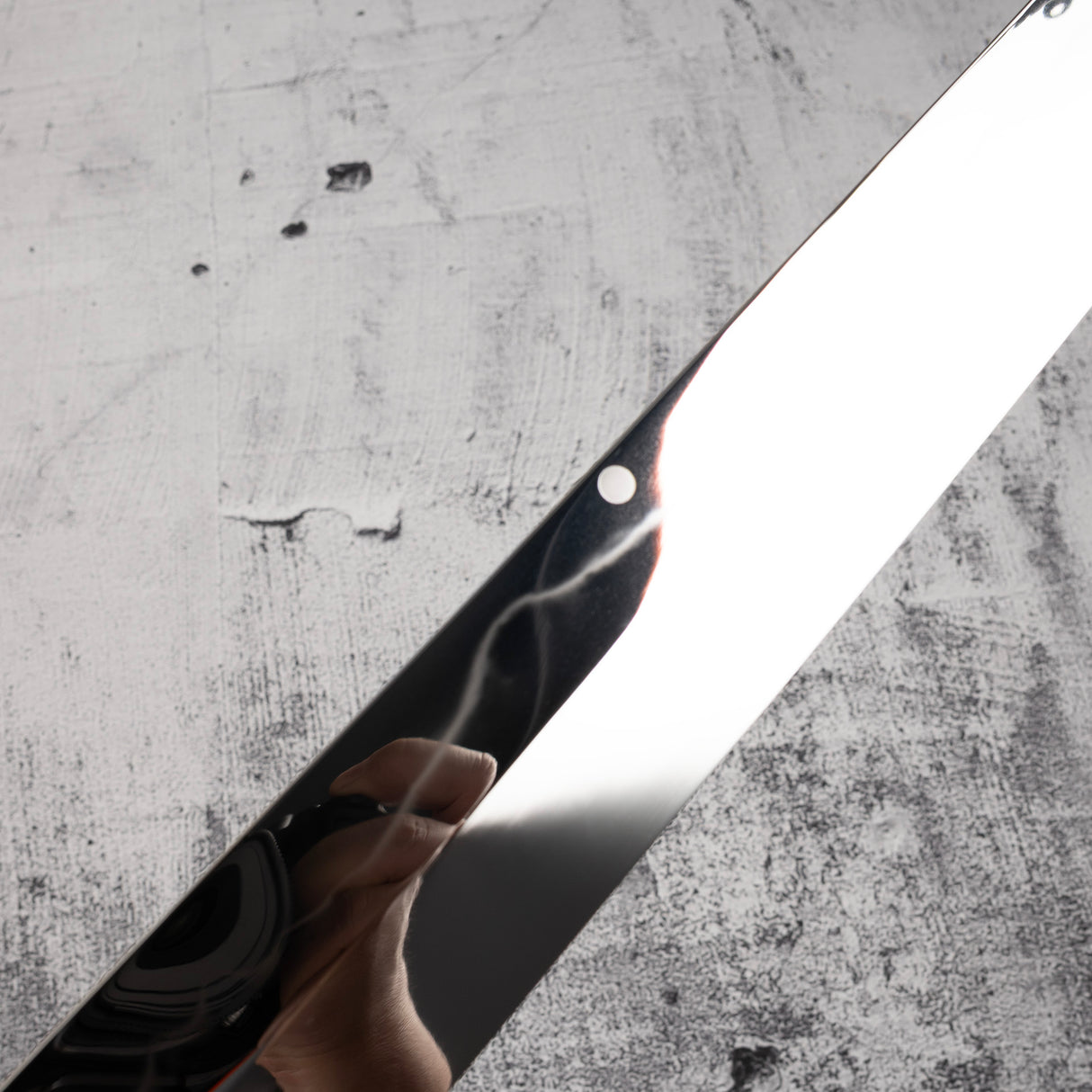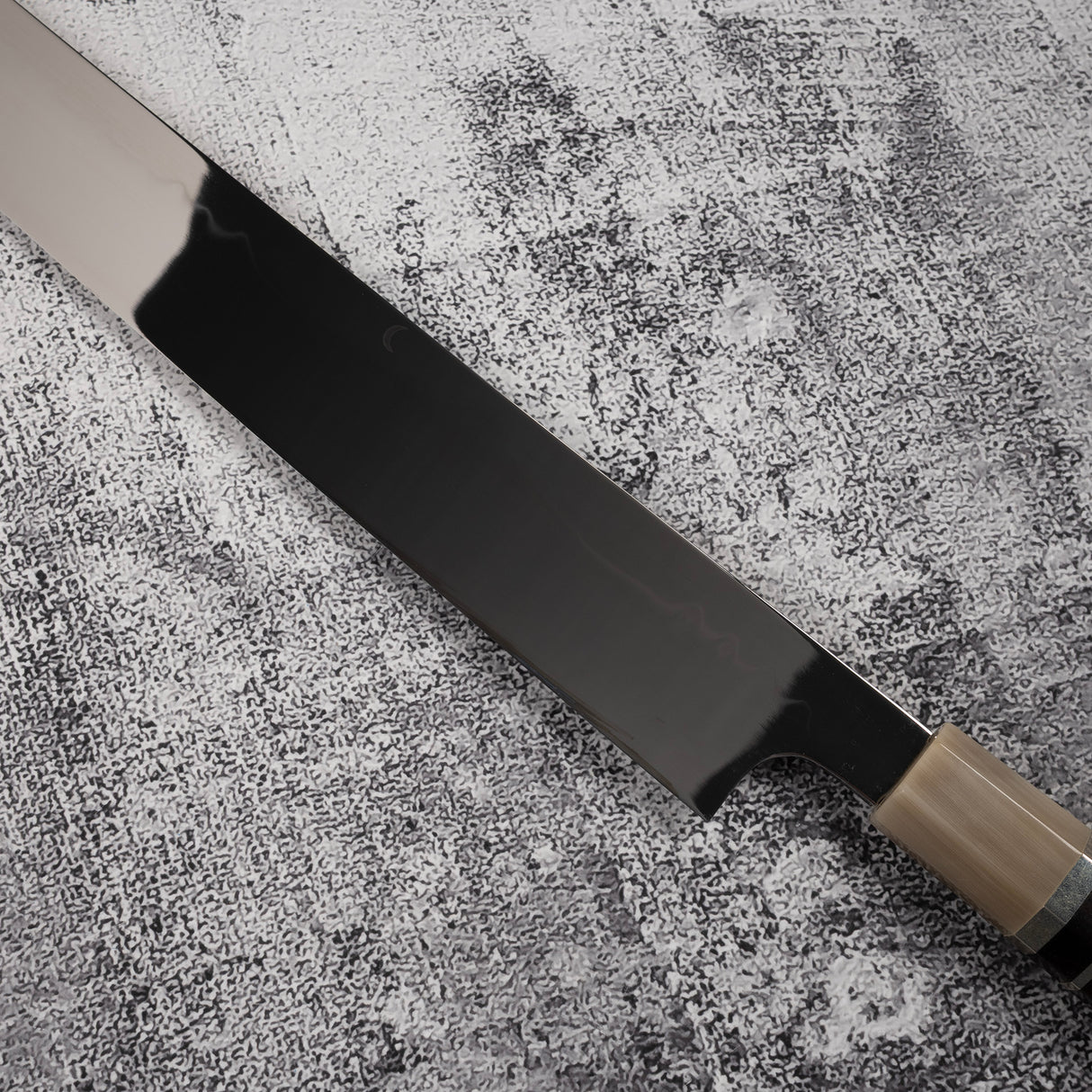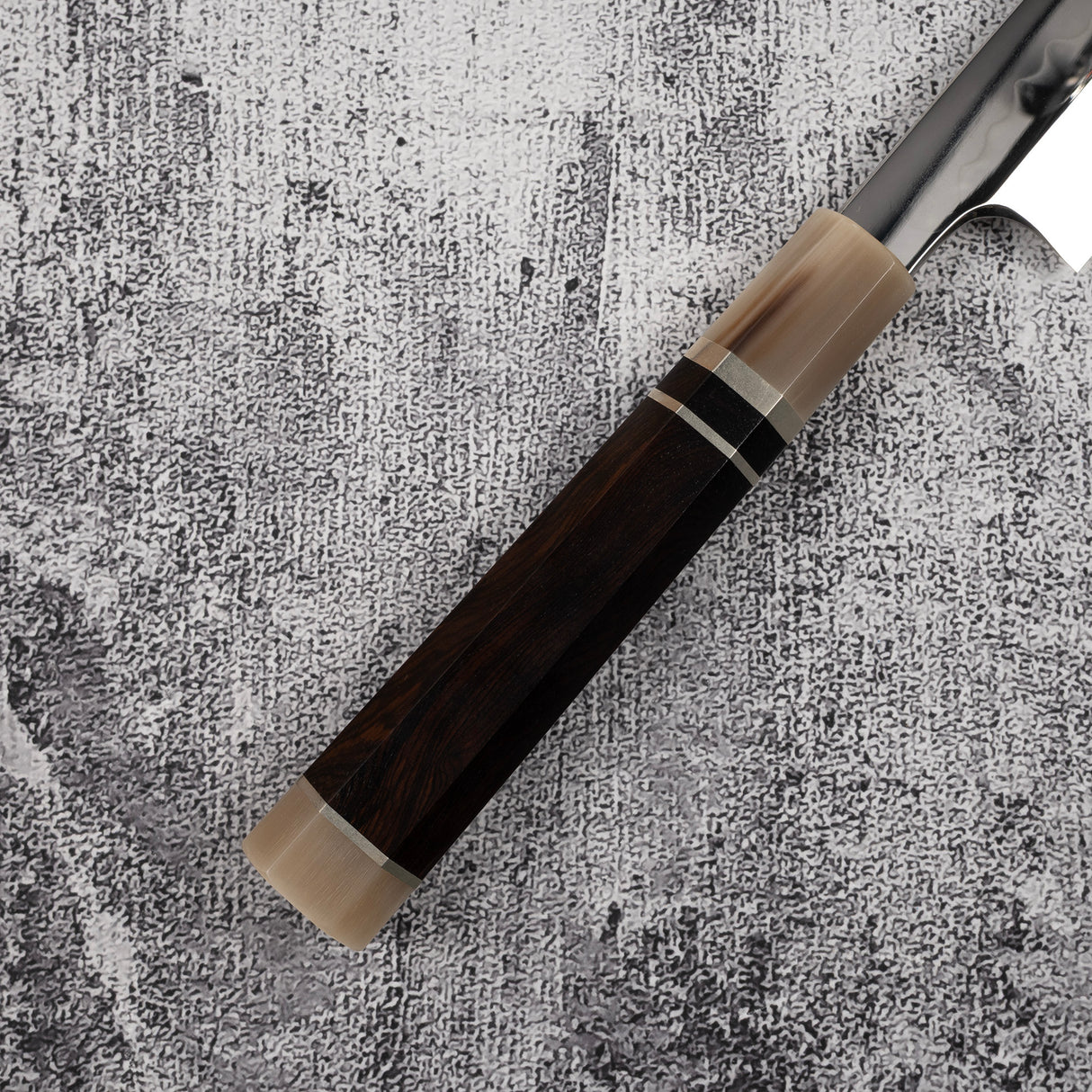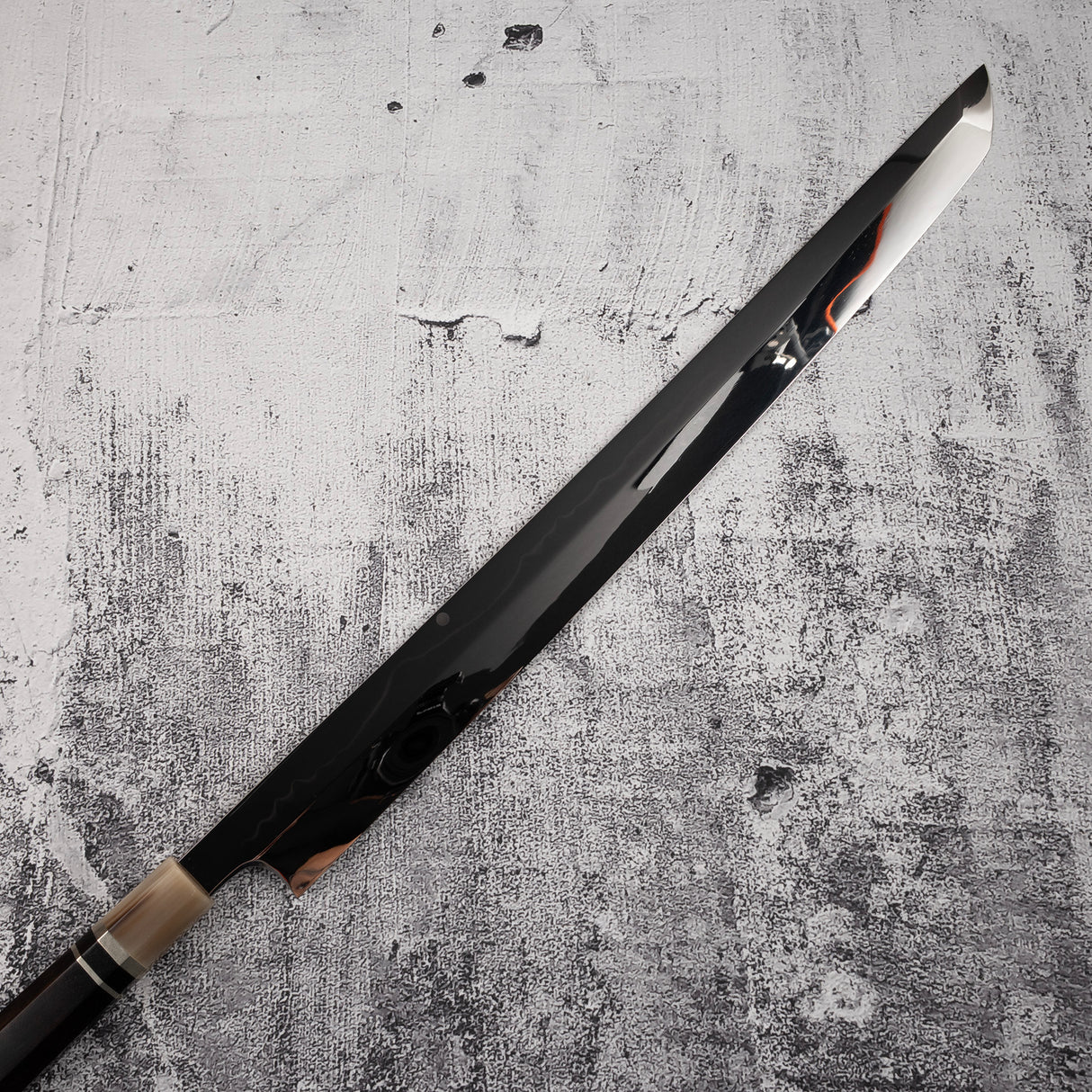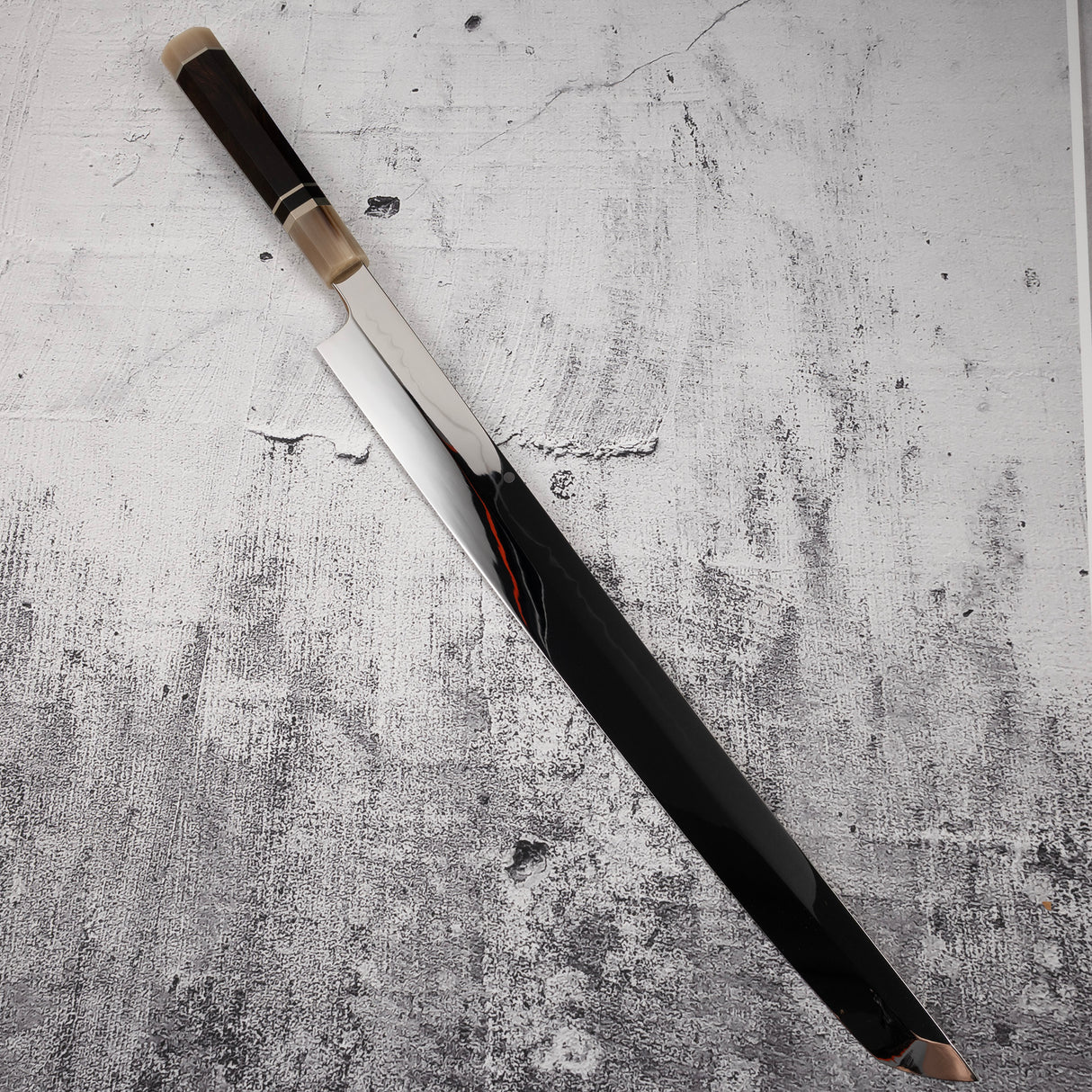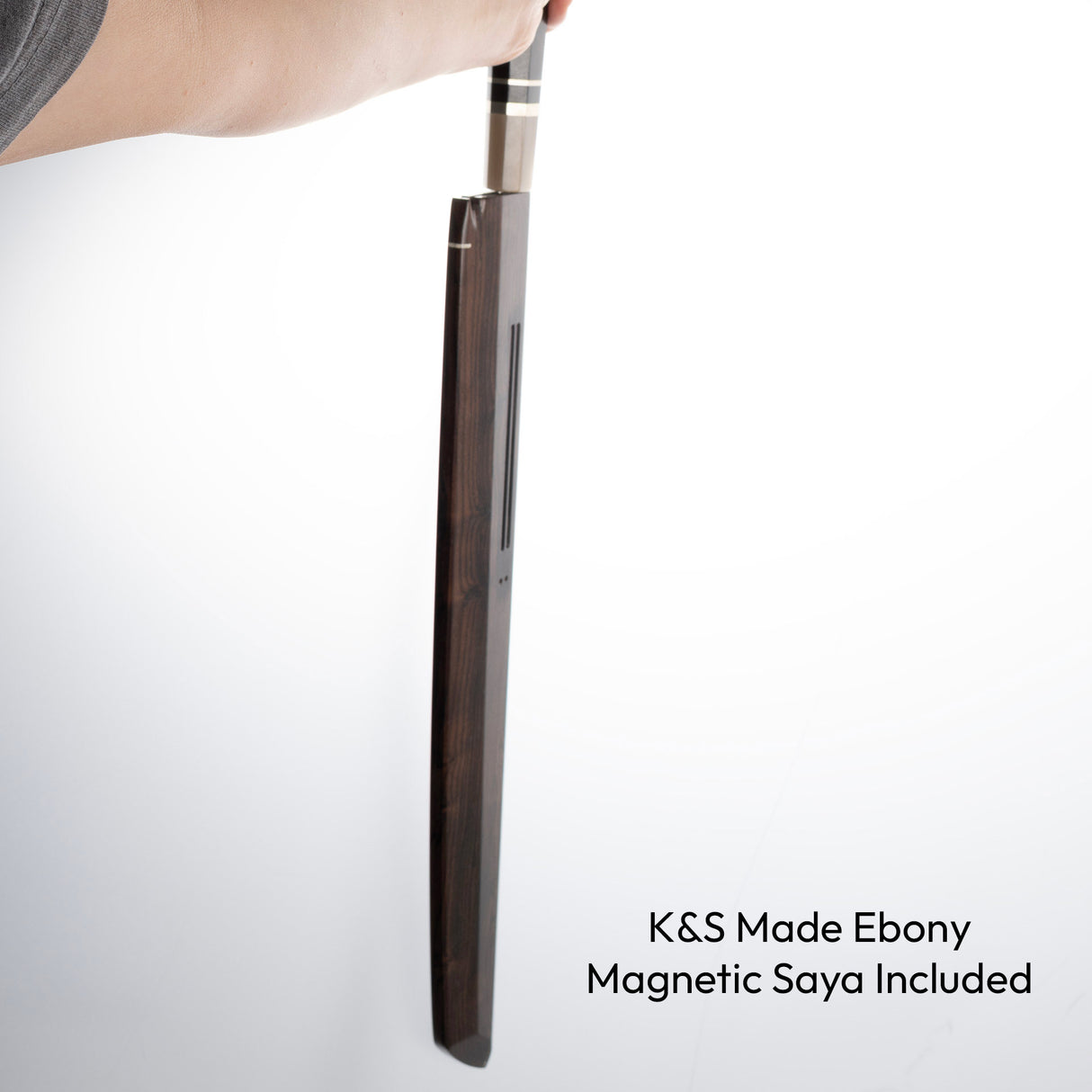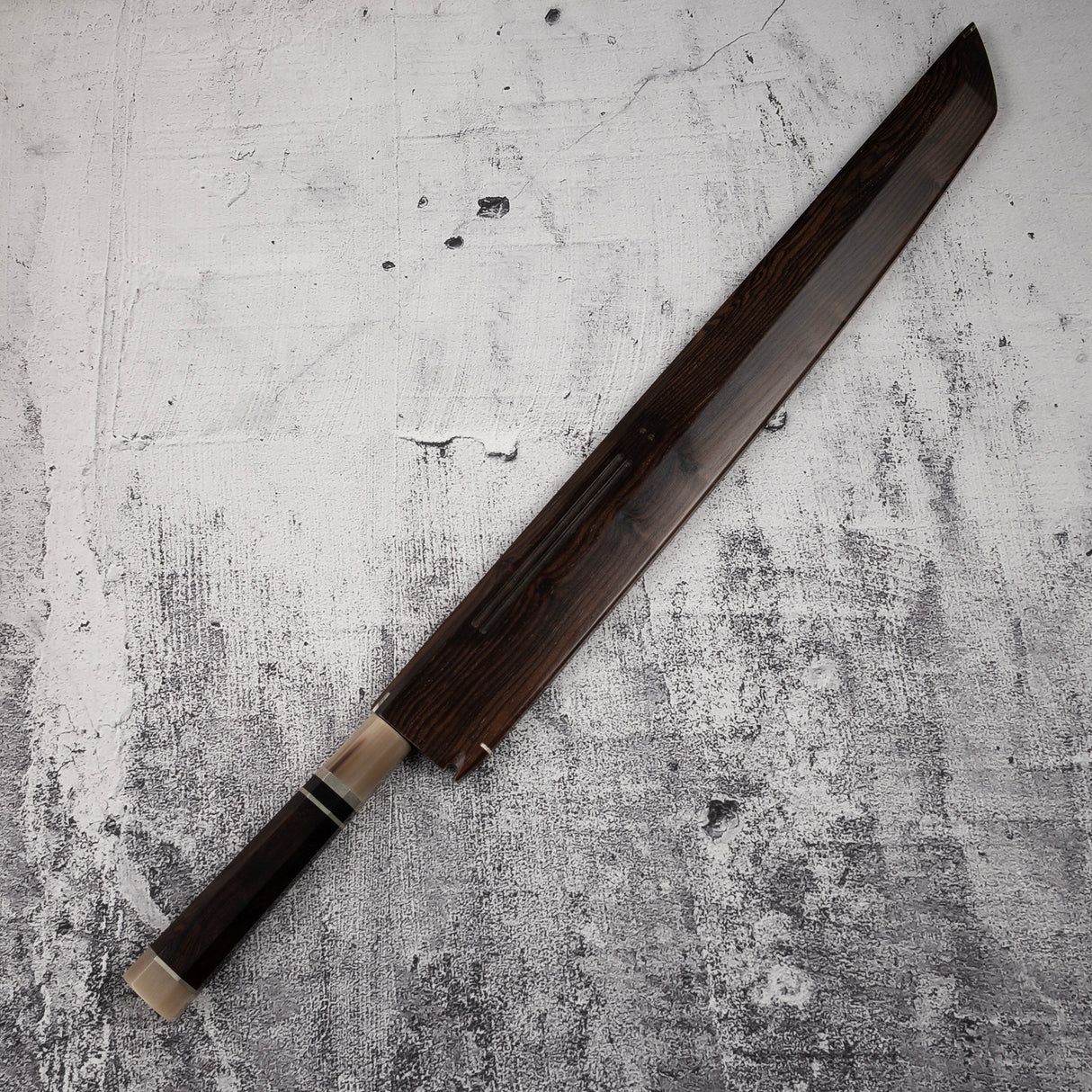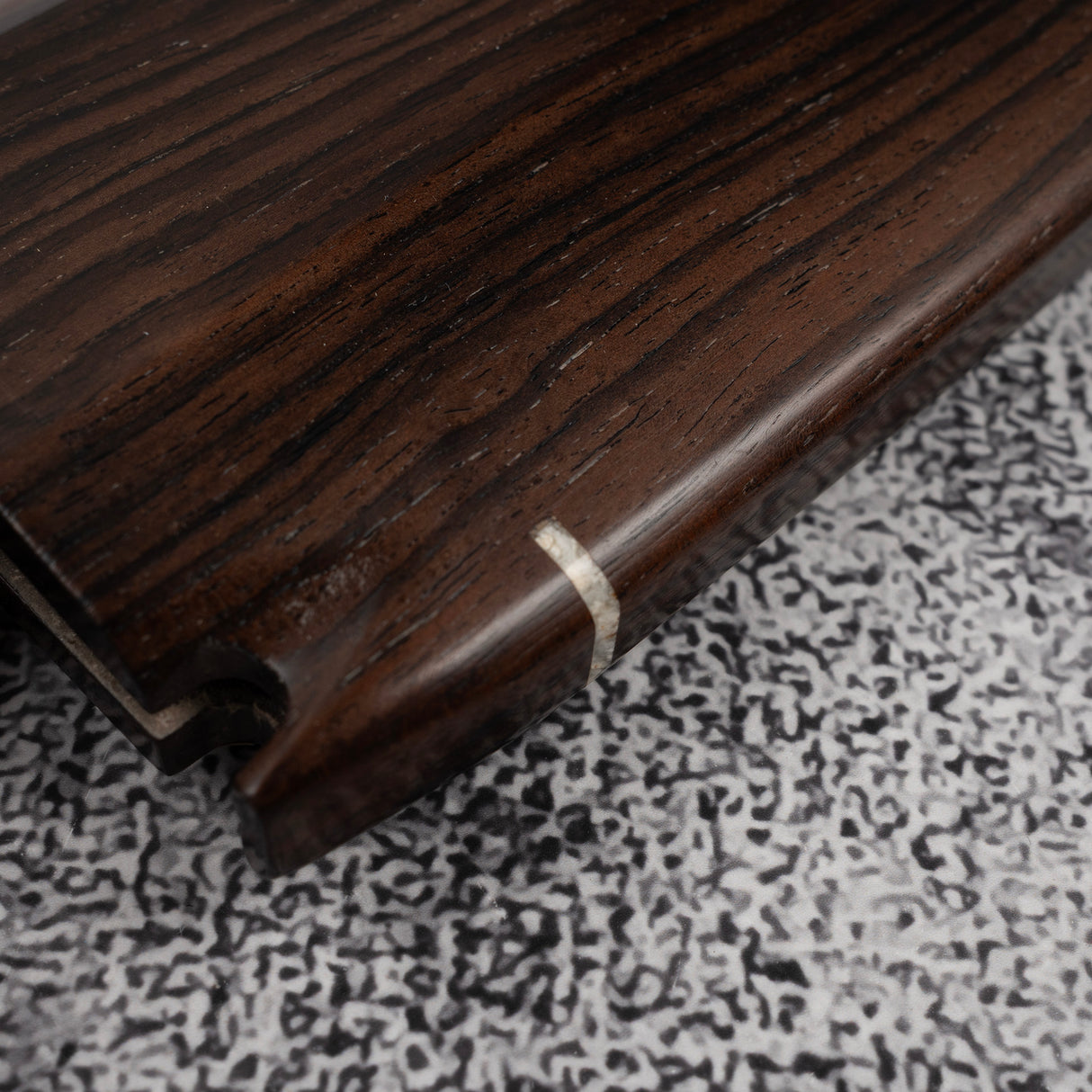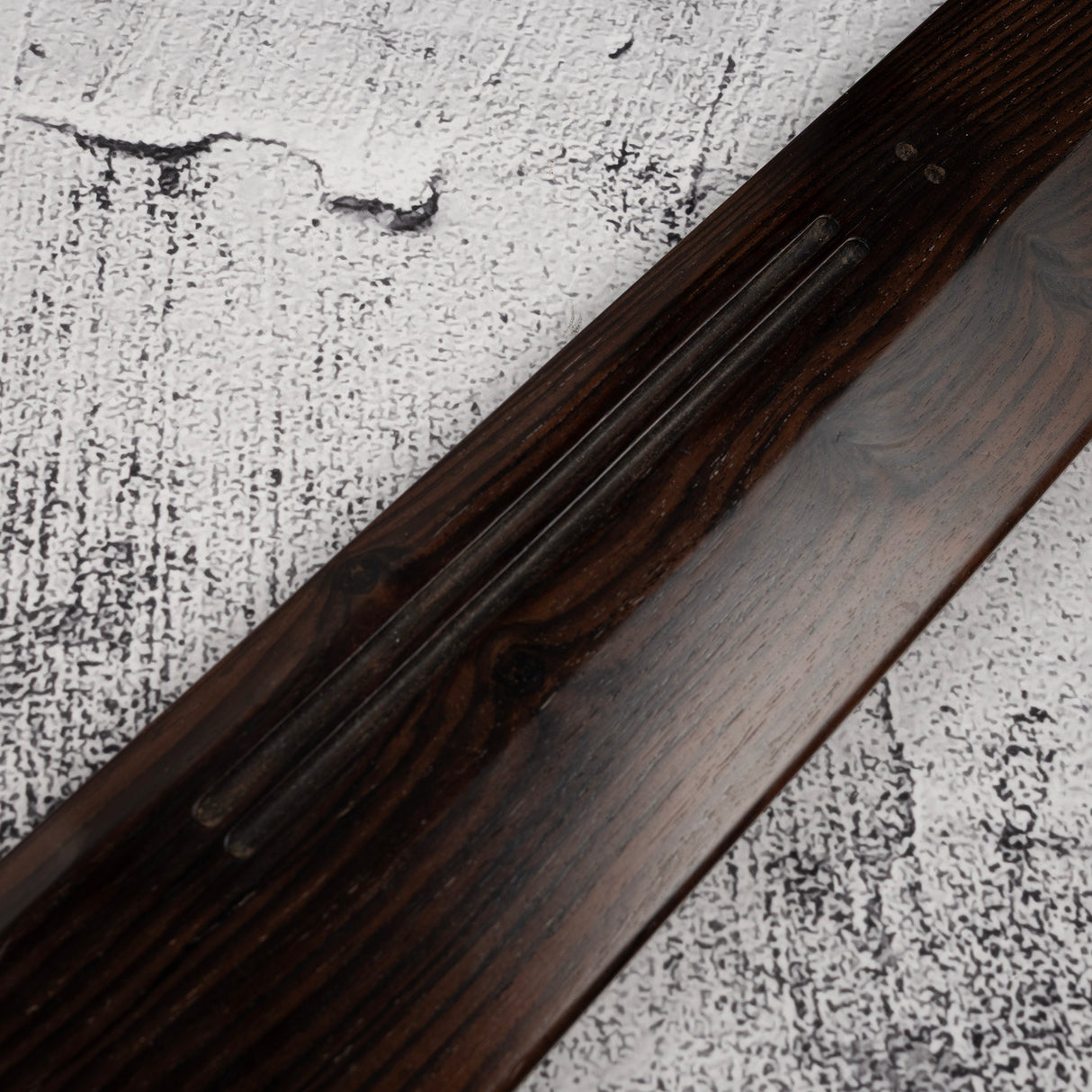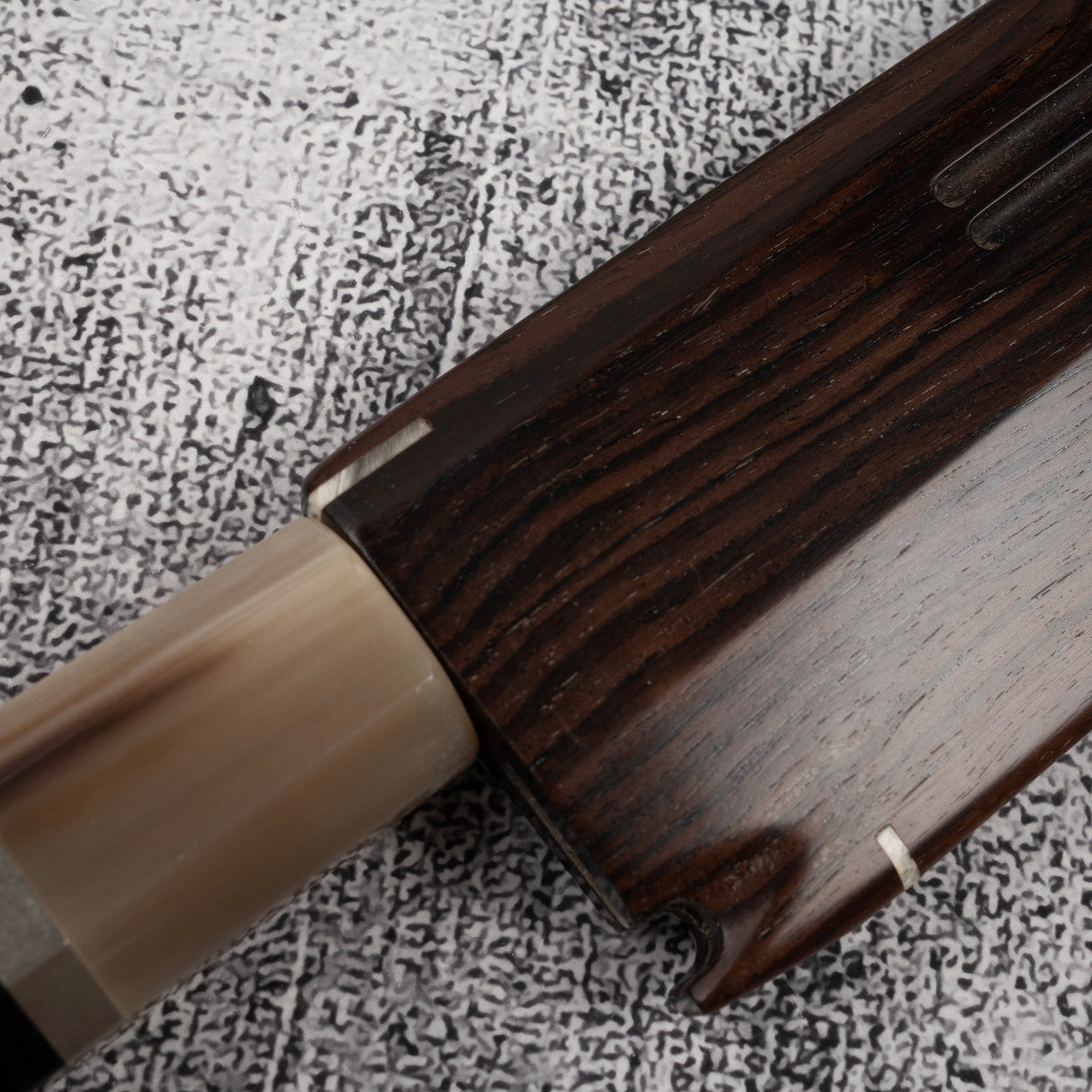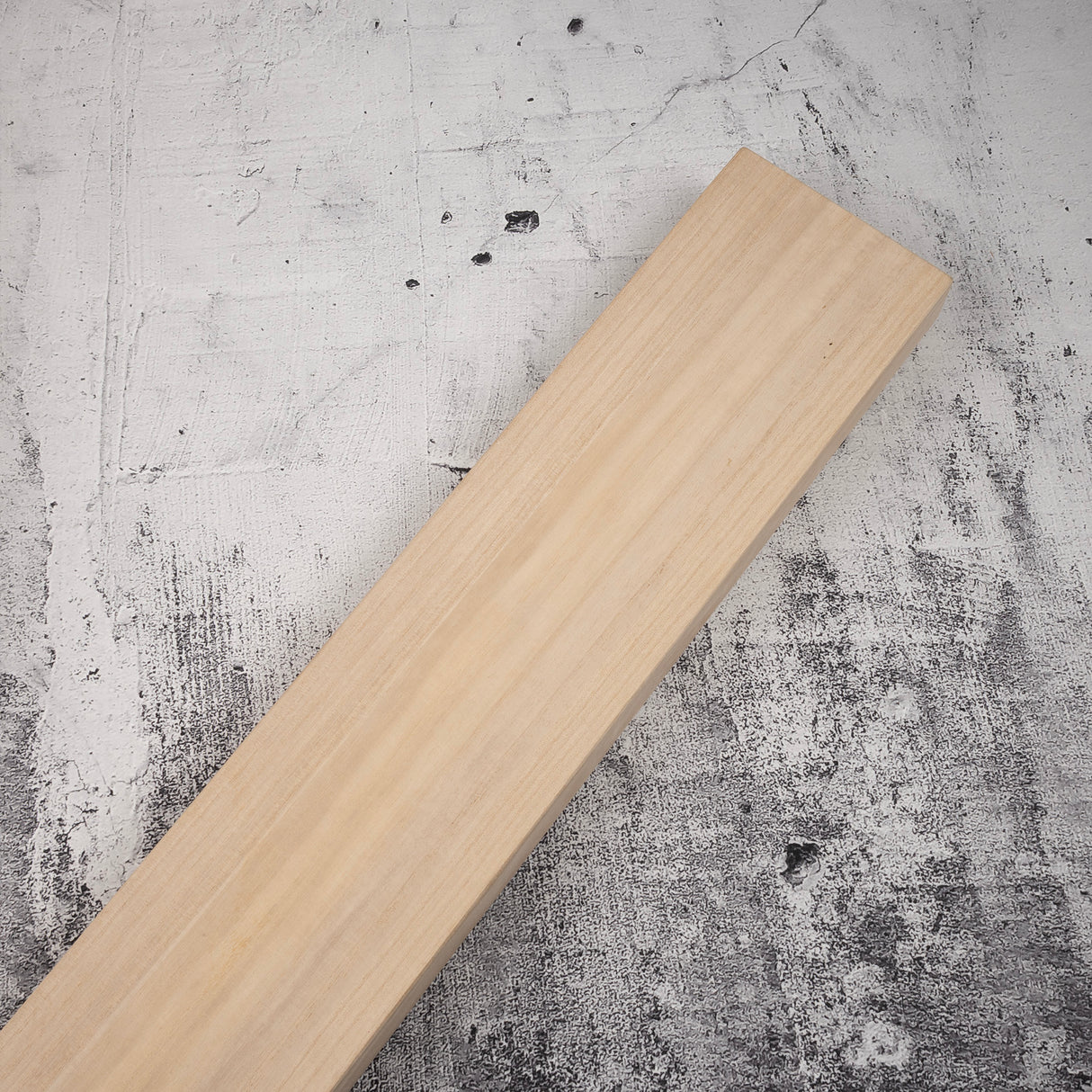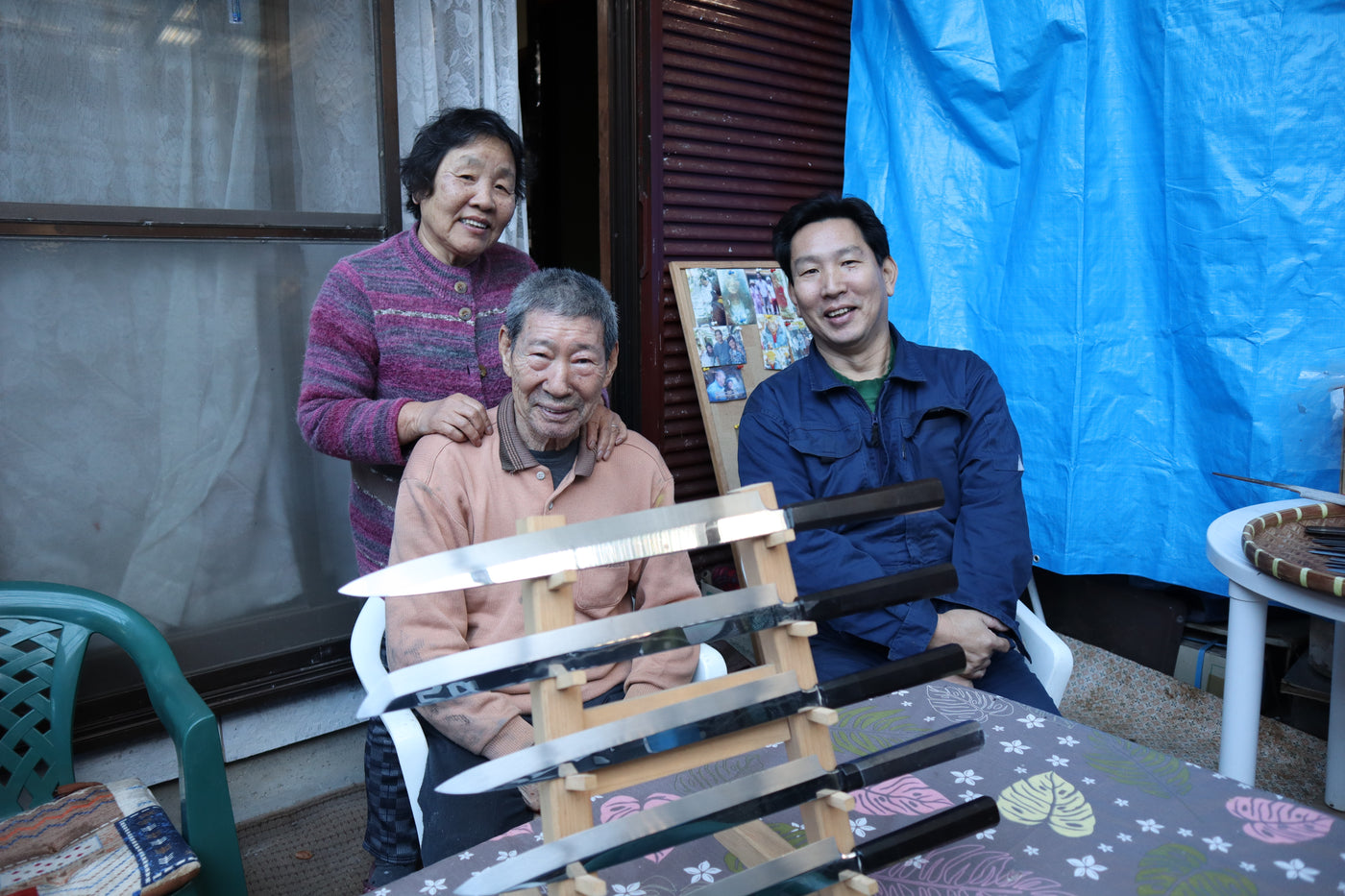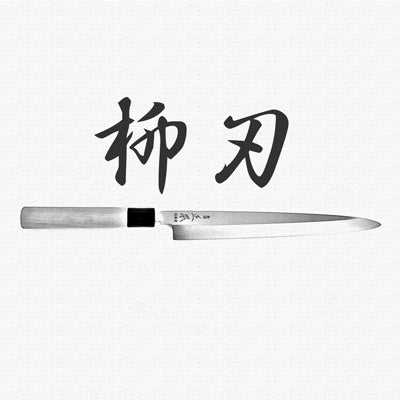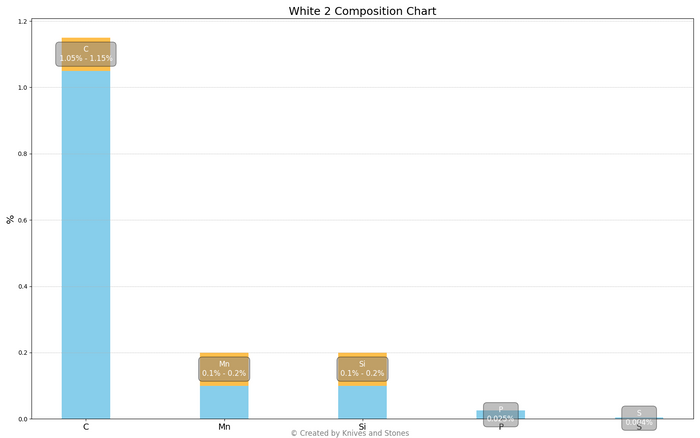Exotic: Genkai Masakuni (玄海正國) Mizu-Honyaki Maguro Kiri 450mm Mt. Fuji Hamon
Exotic: Genkai Masakuni (玄海正國) Mizu-Honyaki Maguro Kiri 450mm Mt. Fuji Hamon is backordered and will ship as soon as it is back in stock.
Couldn't load pickup availability
Detailed Specifications
| Line | Genkai Honayki |
| Profile | Yanagiba |
| Bevel Type | Single Bevel |
| Weight | 445 g 15.7 oz |
| Edge Length | 434 mm .17.09 inch |
| Heel Height | 42 mm .1.65 inch |
| Width @ Spine | 4.6 mm 0.18 inch |
| Width @ Mid | 3.6 mm 0.14 inch |
| Width @ 1cm from Tip | 2.2 mm 0.09 inch |
| Steel | White 2 / Shirogami #2 | Carbon |
| Blade Construction | Honyaki |
| Hardness (HRC) | 60 - 64 |
| Surface Finish | Mirror Polish |
| Handle | triple spacer ebony |
| Region | Other |
| Best for |
|
Genkai Masakuni (玄海正國) Mizu-Honyaki White #2 Maguro Kiri 450mm
A once-in-a-lifetime opportunity to acquire an exceptionally rare masterpiece from the legendary Genkai Masakuni.
This knife is consigned from a loyal K&S customer who originally purchased it through us several years ago. In more than a decade of handling thousands of fine Japanese blades, this is the only example of its kind that has ever passed through my hands. For serious collectors, the rarity alone makes it a crown jewel.
To honour its significance, we commissioned a custom ebony magnetic saya (with musk ox boss inserts). The knife is paired with a matching ebony handle with triple spacers and blonde horn ferrule. The saya was built specifically for this piece, with a powerful magnetic hold that secures the blade without the need for a pin.
The knife is in immaculate, brand-new condition, with a crisply defined Mt. Fuji hamon—a hallmark of the Mizu-Honyaki craft. Few blades embody this level of artistry, tradition, and collectability.
K&S guarantees the authenticity of this knife and will personally oversee secure, insured shipping to its next custodian.
Weight: 445g
Edge length: 434mm
==
Talking about Honyaki kitchen knives from Japan, we always think about the beautiful wave-pattern hamon. I have plenty of those waiting to be listed, but I want to introduce you this beautiful mizu-honyaki blade as my first Honyaki knife here at Knives and Stones: the magnificant "Moonnight Fuji mountain", which is named after its painting like hamon line featuring the famous Fuji-mountain. The K&S Special edition comes with an elegant K&S Ringed Gidgee triple spacer handle with blonde / cream buffalo horn handle and a matching black hardwood saya.
As far as I know, there are only two masters in Japan that can forge this type of hamon, and one of them is "Genkai".
This is one of the finest Japanese honyaki kitchen knives that you can possibly buy, I absoutely LOVE his work, and I want to share them with you.
Care Instruction
- Don't cut hard things! Japanese knives are brittle so bone hacking is a NO NO!
- Wash with neutral detergent after use, and wipe dry;
- Please don't wash knife with dishwasher, it will damage the wood handle;
- Be careful not to leave the knife close to a heat source for a long time;
- It is a lot more dangerous to cut with a blunt knife than a sharp knife!
- It is best to sharpen a Japanese knife regularly on a waterstone.
- Oil the (carbon) knife if storing for an extended period of time to prevent rust.

